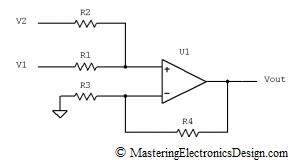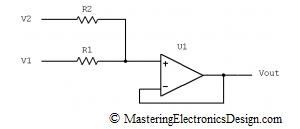My daughter, Laura, a lawyer now, asked me, what is Analog? What is Mixed-Signal Design? She is very familiar with the word digital. Like many people I know who are professionals in other areas than Electronics, she was born in a digital world or got very accustomed to this word. This is mostly due to the fact that digital, as a concept, is/was overused in the consumer market. Today we buy digital TV sets, while the analog ones were popularized as being old. In with the new, out with the old, right? The analog TV bands were, well “disbanded” (pun intended), and are allocated now to digital devices. We moved from the analog LPs (vinyl discs) to CDs (digital compact discs). The land telephone was redesigned digital, and the new telephone, the cell phone, was invented directly in digital format.
It seems that everything around us is digital nowadays. Then, why these words, “It’s an Analog World by Design”? Why is the world analog and, what is analog?
Well, the world is what it is. No matter your beliefs regarding how the world was created, the world exists and we, as humans, are passersby in this world. We have to adapt to this world and take it as is in its complexity and self-reliance. In order to survive in this world we rely on our sensors. Whether they are optical, auditive, tactile, visual, we need these sensors to connect to our world. Our sensors are limited. For example, we can only hear signals within a very small portion of frequencies from about 12 Hz to 20000 Hz, out of a very large number of frequencies in the Universe. We call this band of frequencies sound. We can only see signals with wavelengths from 380 nm to 740 nm and this spectrum spread we call light. We are limited in our perception, but these sensors are good enough for us. For the rest of the signals, we build electronic equipment to enhance our sensors.
The signals we receive from Mother Nature are continuous. We don’t hear any discontinuity or choppiness in the sounds of ocean waves or bird songs and this is what makes the world analog. From our point of view, with the sensors we have, we interact with our world continuously. The signals have amplitude that can vary in time and are composed of a complex of frequencies.
So how is Analog defined? Merriam-Webster dictionary reads that analog is “of, relating to, or being a mechanism in which data is represented by continuously variable physical quantities.” The word comes from the ancient Latin, analogus, or Greek, analogos, meaning proportional. The term was adopted most likely because the continuous signal we perceive is proportional to another continuous signal; or the signal has to be proportionate with itself at every point in time, so that leaves room for no discontinuity; or, the notion might have had a mathematical approach to the Intermediate Value Theorem that states that, if a real function is defined on a closed interval [a,b], and k is a number in the interval [f(a),f(b)], the function is continuous if there is a number c in the interval [a,b] so that f(c) = k. The intermediate values can be construed as being proportional to other intermediate values in the function’s domain, when there is no discontinuity.
No matter the reason for which the word analog was associated with continuous electrical signals, the analog domain and the analog design are here to stay because we live in a continuous world as we perceive it. The interface between our world and our instruments and electrical equipment has to be analog. We need to capture the sound with a microphone, which is analog. We need to send electrical signals into a speaker, which is analog. We need to measure the temperature with a sensor, which is analog. We need to measure the optical light with a sensor, which is analog.
We need to amplify and filter the signals we capture with these sensors, to be able to digitize and process them in the digital domain. Amplification, filtering, addition, multiplication in analog domain and the circuits we achieve these operands and tasks with, are called Analog Signal Processing.
Analog signals and analog processing have their own limitations and that is why we digitize the signals, for an error free transmission, correction, easy storage, sharp filtering and many other reasons. The design of the circuits that handle the signals between the analog and digital domains is called Mixed-Signal Design.
The design of the electronic circuits that manage the analog processing is very subjective. There are many ways to handle different tasks in the analog domain, but not all are seen as being elegant or high-end solutions. This is where the real talent comes in place and where the knowledge, expertise and experience of the analog designer have a say. Because of that, the analog and mixed-signal design became an art.
The design cannot be automated as with the digital circuits. Sure, there are computer tools like SPICE based programs, which can verify and calculate the analog design, but the schematics have to be created by a human being in the first place. Maybe that is why we have so many computer tools to automatically create digital circuits, while the analog tools are still to be invented. Human creativity is difficult to be automated. Maybe a distant future, when artificial intelligence will approach creativity, might be able to automatically create analog circuits. But, will it?








